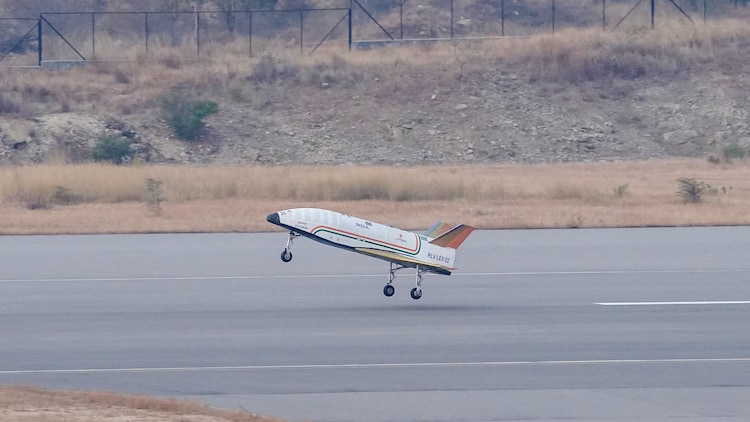Watch: ISRO Successfully Lands ‘Pushpak’, India’s First Reusable Launch Vehicle

India’s space agency, the Indian Space Research Organisation (Isro), achieved a significant milestone with the successful landing of ‘Pushpak,’ the country’s first Reusable Launch Vehicle (RLV).
Key Points
• Isro successfully carries out landing mission of RLV named ‘Pushpak’
• ‘Pushpak’ is an all-rocket, fully reusable single-stage-to-orbit vehicle
• A Reusable Launch Vehicle, its design was okayed in 2012, maiden flight in 2016
The landing mission took place at the Aeronautical Test Range (ATR) in Challakere, Karnataka, near Chitradurga, marking India’s bold step towards making space access more affordable and sustainable. Led by Isro chairman S Somanath and senior officials, the launch saw Pushpak being lifted by an Indian Airforce Chinook helicopter and released from an altitude of 4.5 km.
#ISRO successfully carries out landing experiment of Indian space shuttle demonstrator #Pushpak today! pic.twitter.com/CHnlAra2LG
— AoI Ventures (@aoiventures) March 22, 2024
Demonstrating precision and autonomy, Pushpak autonomously approached the runway, making cross-range corrections before landing precisely on the runway. Equipped with a brake parachute, landing gear brakes, and nose wheel steering system, Pushpak successfully came to a halt after landing.
The Pushpak RLV represents a culmination of years of research and development aimed at creating an all-rocket, fully reusable single-stage-to-orbit (SSTO) vehicle. Drawing inspiration from various technological demonstrators like the X-33, X-34, and DC-XA, Pushpak aims to revolutionize space access.
This successful landing marks the third flight of Pushpak, following rigorous testing to perfect its robotic landing capabilities. In April of the previous year, Pushpak demonstrated its autonomous landing after release from an Indian Air Force Chinook helicopter, marking a crucial milestone in its development towards achieving orbital re-entry capabilities.
Named after the mythical ‘Pushpak Viman’ from the Ramayana, Isro’s Pushpak symbolizes prosperity and innovation, serving as a flying testbed for evaluating hypersonic flight, autonomous landing, and powered cruise flight technologies.
With an investment exceeding Rs 100 crore, the Pushpak RLV project not only underscores India’s technological prowess but also paves the way for future endeavors. It sets the stage for ambitious goals such as establishing the Bhartiya Antariksha Station by 2035, further solidifying India’s position in the global space arena.









